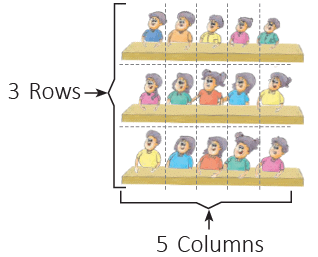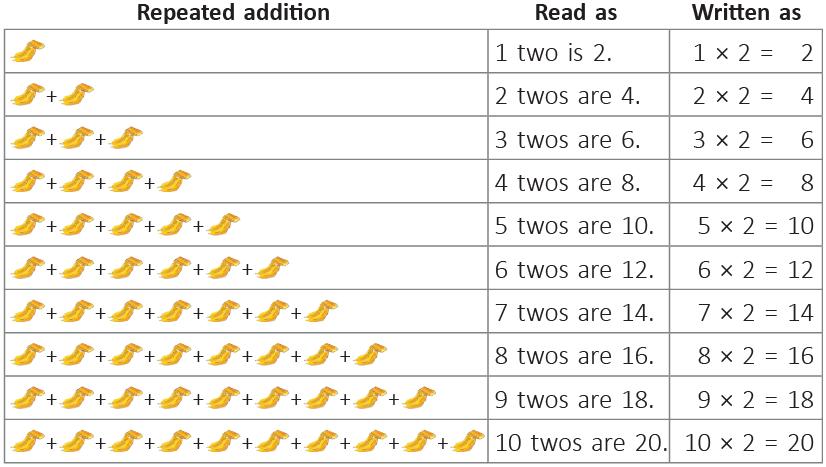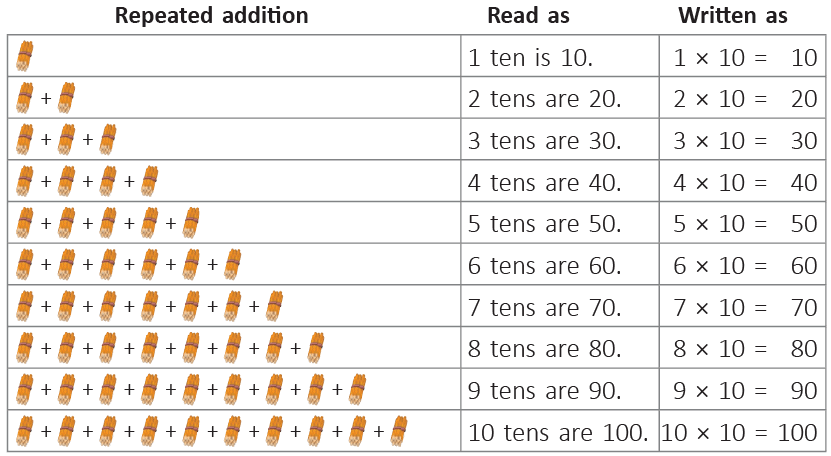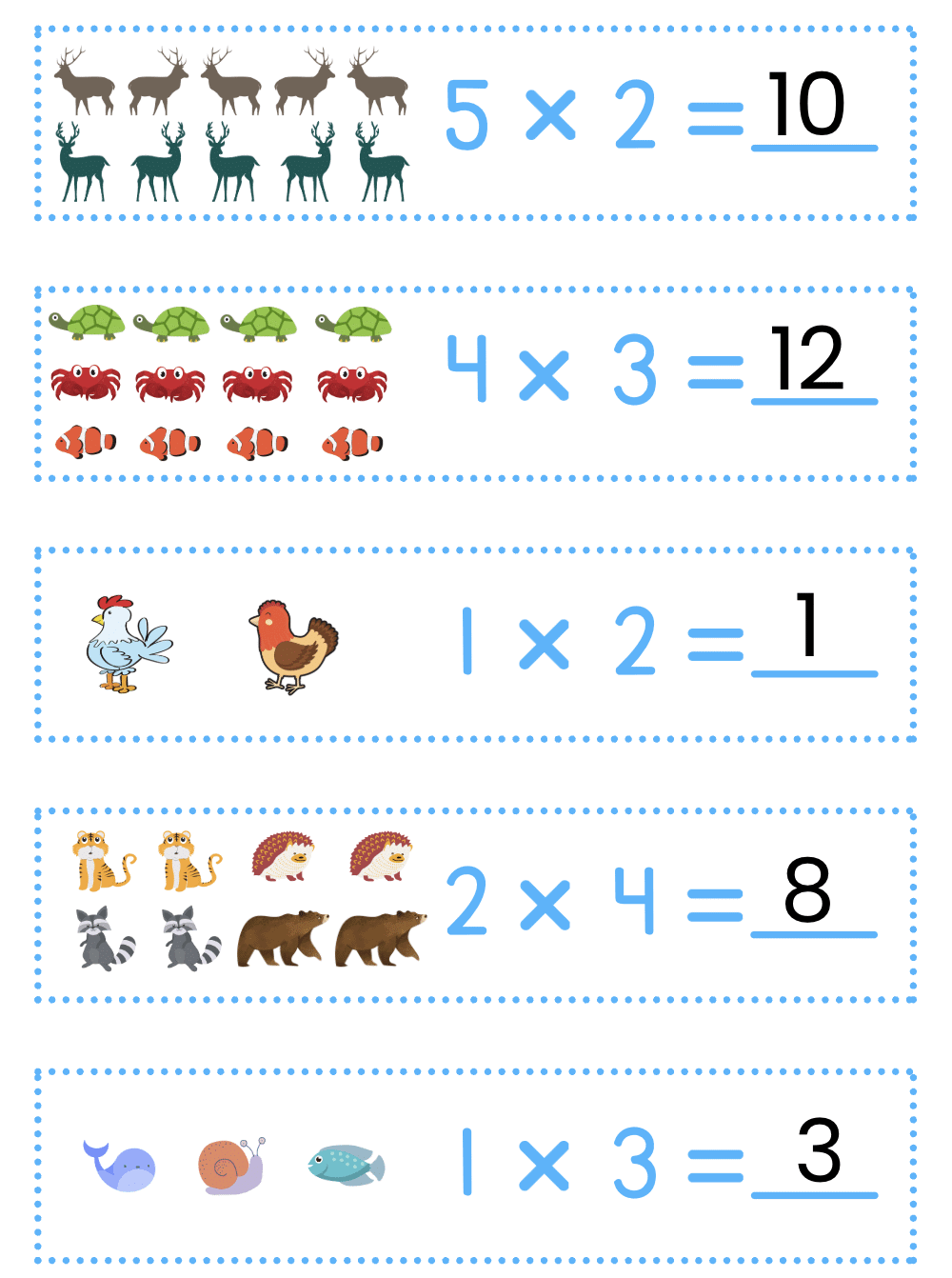Introduction to Multiplication Class 1 Notes Maths
| Table of contents |

|
| What is Multiplication? |

|
| Multiplication on a Number Line |

|
| Multiplication Using an Array |

|
| Building Multiplication Tables or “Times Tables” |

|
| Let's Try |

|
What is Multiplication?
Imagine that two elephant families are going for a jungle walk. Each family has 4 elephants.
Each family has 4 elephants.
We say, there are 4 + 4 = 8 elephants going for a jungle walk.
Or
There are 2 groups of elephants and there are 4 elephants in each group.
4 + 4 = 8 is called repeated addition expression for 2 (equal sized) groups of 4 elephants each.
Adding the same number over and over again is called repeated addition.
EduRev Tips: 4 + 4 = 8 is called repeated addition because 4 is added repeatedly.
Another Way of Writing Repeated Addition
Look at the repeated addition expression in the picture. 5 + 5 + 5 + 5 = 20
5 + 5 + 5 + 5 = 20
Instead of adding the same number 5 over and over again 4 times, an easier way to get the answer is 4 x 5 = 20.
4 x 5 = 20 is read as 4 times 5 is equal to 20.
Or
4 multiplied by 5 is equal to 20.
EduRev Tips: 'x' is the sign of multiplication.
4 x 5 is the multiplication expression instead of repeated addition expression
5 + 5 + 5 + 5 = 20.
Multiplication on a Number Line
Multiplication can also be shown on a number line.
3 x 5 = 15 is represented below on the number line. Starting from 0, there are 3 jumps and each jump covers 5 units (steps) on the number line.
Starting from 0, there are 3 jumps and each jump covers 5 units (steps) on the number line.
Or
3 times 5 units covered.
Or
3 x 5 = 15 (There are 3 jumps. Each jump is of 5 units,)
 |
Test: Introduction to multiplication - 1
|
Start Test |
Multiplication Using an Array
Let us understand another way of multiplication— by using an array. An array is an arrangement of numbers or objects in rows and columns.
Look at the picture of 15 children sitting in 3 rows and 5 columns: Here, there are 3 equal groups of 5 children.
Here, there are 3 equal groups of 5 children.
Or
There are 3 x 5 = 15 children in all.
Number of groups x Equal number of objects in each group = Number of objects
EduRev Tips: Array tells us how many groups of equals are there.
Building Multiplication Tables or “Times Tables”
Multiplication tables can be formed by repeated addition.
- Multiplication Table of 1

- Multiplication Table of 2

- Multiplication Table of 5

- Multiplication Table of 10

EduRev Tips:
- One multiplied by any number gives the number itself.
- In multiplication table of 5 we have either 5 or 0 in the ones place.
 |
Download the notes
Chapter Notes: Introduction to Multiplication
|
Download as PDF |
Let's Try
Now, let's try multiplication with the help of animals:

Solution:

|
16 videos|93 docs|23 tests
|
FAQs on Introduction to Multiplication Class 1 Notes Maths
| 1. What is multiplication as repeated addition? |  |
| 2. How is multiplication represented on a number line? |  |
| 3. How is multiplication done using an array? |  |
| 4. What are multiplication tables or "times tables"? |  |
| 5. How can I build my multiplication tables or "times tables" skills? |  |
























